
Motorola Edge30 Ultra
256 GB, Interstellar Black, 6.67", Dual SIM, 5G
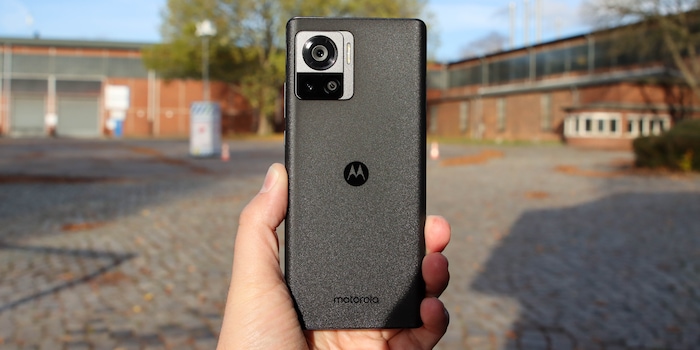
The Motorola Edge 30 Ultra might say it features 200 megapixels, but in the end that’s just a number. Nevertheless, it’s approaching the upper echelon of smartphones.
200 megapixels, 125 watts and 144 hertz: Motorola wants to use the Edge 30 Ultra’s features to secure a spot among top smartphones. It succeeds in many respects – but there’s still room for improvement.

Motorola Edge30 Ultra
256 GB, Interstellar Black, 6.67", Dual SIM, 5G
The 6.67-inch OLED display on the Motorola Edge 30 Ultra leaves nothing to be desired. It offers a sharp 2400×1080 pixel ratio and a maximum refresh rate of 144 hertz. Its colour reproduction looks natural, and you can adjust the colour temperature to your liking in the settings. The maximum brightness of 1250 nits ensures an easily recognisable image in sunshine. However, the edges on either side are too curved for my taste. The display is too reflective for me. I struggle to see the upper and lower end of an image when taking pictures.
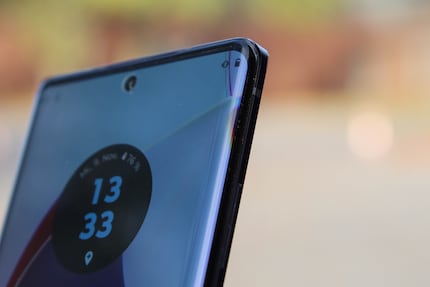
The front is covered by Gorilla Glass 5. It’s robust, but not quite as stable as the newer Gorilla Glass Victus. That one offers an extra 80 centimetres of drop height and greater scratch resistance. The back of the Edge 30 Ultra is also made of glass, but it’s matt black. I like it. Fingerprints don’t appear as easily.
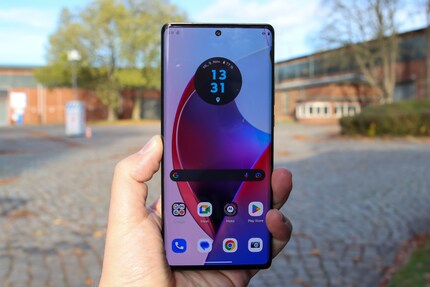
Motorola has installed the Snapdragon 8+ Gen 1 in the Edge 30 Ultra. My test device features twelve gigabytes of working memory. However, there are also variants with eight gigabytes. You can choose between 128, 256 or 512 gigabytes of storage, which can’t be expanded.
In Geekbench 5, a general performance benchmark test, the Edge 30 Ultra is on par with other smartphones using the Snapdragon 8+ Gen 1. Making it one of the most powerful models currently available. This will change in the next few months when the first smartphones featuring the Snapdragon 8 Gen 2 are released – but this won’t make the Motorola slow or outdated by a long shot.
| Geekbench 5 | Single- / Multi-Core | OpenCL / Vulkan |
|---|---|---|
| Motorola Edge 30 Ultra | 1324 / 4256 points | 6527 / 5896 points |
| Redmagic 7S Pro | 1352 / 4241 points | 6668 / 7683 points |
| Samsung Galaxy Z Fold4 | 1327 / 4151 points | 6357 / 6096 points |
| Xiaomi 12T Pro | 1253 / 4200 points | 6543 / 6827 points |
The 4610 mAh battery doesn’t offer any surprises – positive or negative. With routine use, it lasts throughout the day. If I do need to charge it, the included 125-watt power supply does so quickly.
The main camera on the Edge 30 Ultra has an impressive-sounding resolution of 200 megapixels. Its photos are good, but not as outstanding as the high resolution would suggest. Examples can be seen in its comparison with the Xiaomi 12T Pro, which also has a 200-megapixel sensor.
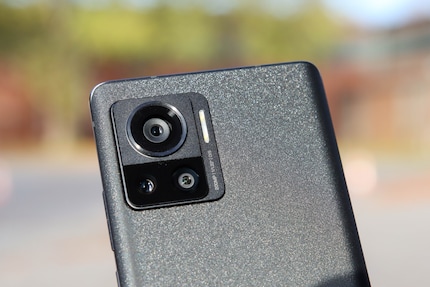
In addition, there’s a 2-megapixel telephoto camera with dual optical magnification. It’s accompanied by a 50-megapixel wide-angle lens with a 114-degree viewing angle on the back.



The pictures are decent quality, but nothing special. Thus, the Edge 30 Ultra ranks among top smartphones, but it doesn’t quite reach the number one spot. It’ll need a bit more detail to get there. The colour reproduction, on the other hand, looks natural.
Portrait mode uses software to blur the background, reliably cropping me out in the process. In portrait mode, I can even choose between focal lengths of 35, 50 and 85 millimetres. 35 and 50 millimetres look pretty much identical, at 85 millimetres I detect a slight loss of image quality.

The front camera on the Edge 30 Ultra has a 60-megapixel sensor. However, a resolution of 15 megapixels is set by default. In a process called pixel binning, four pixels are combined into one. Primarily to reduce image noise. In my example, however, I also discovered that the lower resolution shot offers a greater level of detail. Not the expected result, but at least there’s a reason to select the full resolution setting: you can zoom in further.

Overall, the Motorola delivers very usable selfies. They’re quite detailed and the colours look natural. Portrait mode works well, and you can select a slightly wider shooting angle if needed. However, your image doesn’t get that much larger.

Android 12 comes installed on the Edge 30 Ultra by default. Android 13 should become available from the start of 2023, but there’s no exact release scheduled for the update.
Motorola traditionally comes with few additional apps. Besides the standard fare, you need only expect four pre-installed apps from Motorola plus Facebook – although the social network can be uninstalled with little effort.
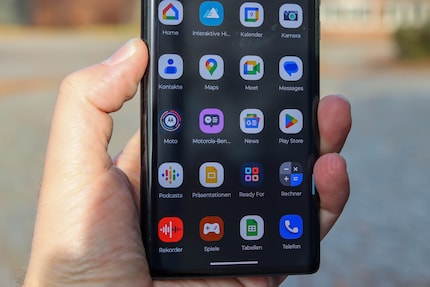
The Moto app deserves a special look. It offers some gesture controls that aren’t Android standard. This includes double taps on the back to launch a specified app or two chopping motions with the smartphone in hand to turn on the flashlight. Two rotations launch the camera. Nothing new in Motorola terms, but other manufacturers have only adopted them in isolated cases so far.
In addition to gesture controls, the Moto app also includes settings for personalisation, games, and the display, as well as tips and tricks for the entire device. Some of these are just carbon copies of your classic settings. Anyone struggling with the usual layout should be pleased with the easy-to-manage app.
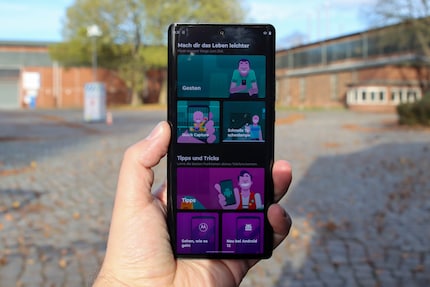
In addition, «Ready For» is an app that allows the smartphone to be connected to external screens and Windows PCs. The connection uses either Miracast or a cable. Among other things, you can use desktop view – similar to Samsung Dex – on external screens and connect the mouse and keyboard to the smartphone via Bluetooth. You’ll still need to install the Windows version of Ready For on a computer before you can share files, use a shared clipboard, or participate in video calls using your smartphone camera as a webcam.
Motorola’s Edge 30 Ultra manages to catch up with top smartphones. However, the 200-pixel phone isn’t quite a viable competitor to the top dogs from Samsung, Xiaomi, OnePlus and Google.
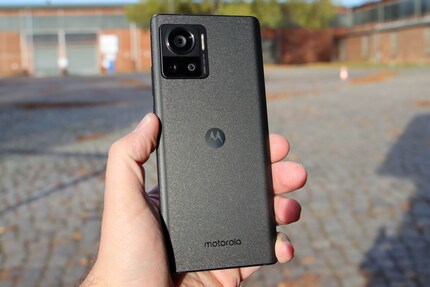
Apart from a few exceptions, the smartphone sports top features. The camera delivers good pictures, but doesn’t set itself apart from other smartphones with lower resolutions. I enjoy the simple Android interface, and «Ready For» as well as the Moto app offer software features that aren’t standard on Android. Annoyingly, Android 13 has been announced, but not released yet. Motorola definitely has room to grow here. The display lacks the more stable Gorilla Glass Victus to catch up with top devices, and the edges could be less rounded for my taste.
The biggest drawback for the Edge 30 Ultra might be its innovative competition. The next chip generation has already been featured on the Xiaomi 13 and OnePlus 11. This doesn’t automatically make Motorola’s smartphone worse, but newer hardware will always be more enticing.
Header image: Jan Johannsen
When I was but a young student, I'd sit in my friend's living room with all my classmates and play on his SuperNES. Since then I've had the opportunity to test out all the newest technology for you. I've done reviews at Curved, Computer Bild and Netzwelt, and have now arrived at Galaxus.de.